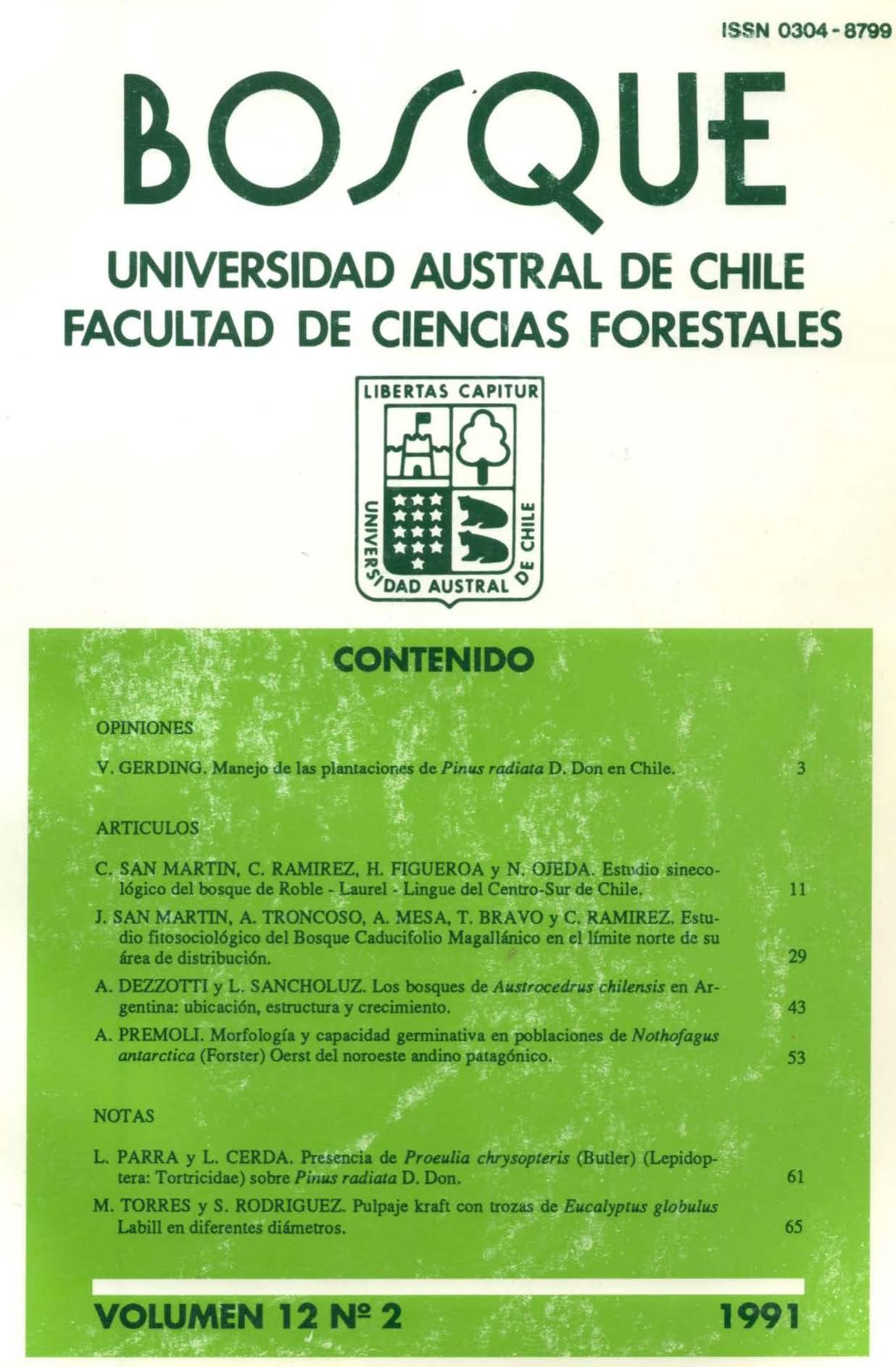Phytosociological study of the magellanic deciduous forest in its northern boundary of distribution
Main Article Content
Abstract
The northern most stands of Nothofagus pumilio (lenga) and Nothofagus antarctica (ñirre) in the protected area of Vilches (35° 36' L.S. and 71° 03 ' L.W.) in the western slope of the Andean Mountain Range (VII Region of Chile) were studied.
Nothofagus pumilio with discontinuous distribution, at an altitude of 1.400 m, forms pure and mixed forest and shrub communities. The forest are stratified, with climber plants. They grow in humid/cold slopes and ravines, with volcanic "trumao" soil, rich in organic matter, occuping a gradient from 1.400 to 1.800 m altitude. Nothofagus antarctica forms only shrub communities in habitats and altitudes similar to lenga.
The flora of these stands is made up 80 species, 65% of them being native. In the forest biological spectrum, phanerophytes and hemicryptophytes dominate. In the shrub communities, these are surpassed by chamaephytes. The evergreen shrubs and herbs (annuals and perennials) dominate. Maytenus disticha, Berberis rotundifolia and Festuca acanthophylla, presented the greatest importance values as well as the greater larger affinity with Nothofagus pumilio. Nothofagus antarctica shows the greatest affinity with Rumex acetosella and Baccharis rhetinodes, both also with great importance values.
The largest floristic similarity is found among the lenga forest and the ñirre scrub. The shrubs of the two Nothofagus species linked with 65,2% of similarity. They are restricted to higher altitudes growing at the timber line mixed with Nothofagus obliqua var. macrocarpa.
The Nothofagus pumilio forest is described as a variant with Chusquea culeou of the Nothofagetum pumiliae Oberd. (1960) of more humid conditions and the scrub of the same species, as Nothofagetum pumiliae Maytenetosum San Martín y Ramírez (1987) of drier conditions. For the Nothofagus antarctica scrub community the name Nothofagetum antarcticae Skottsb (1916) is proposed.

